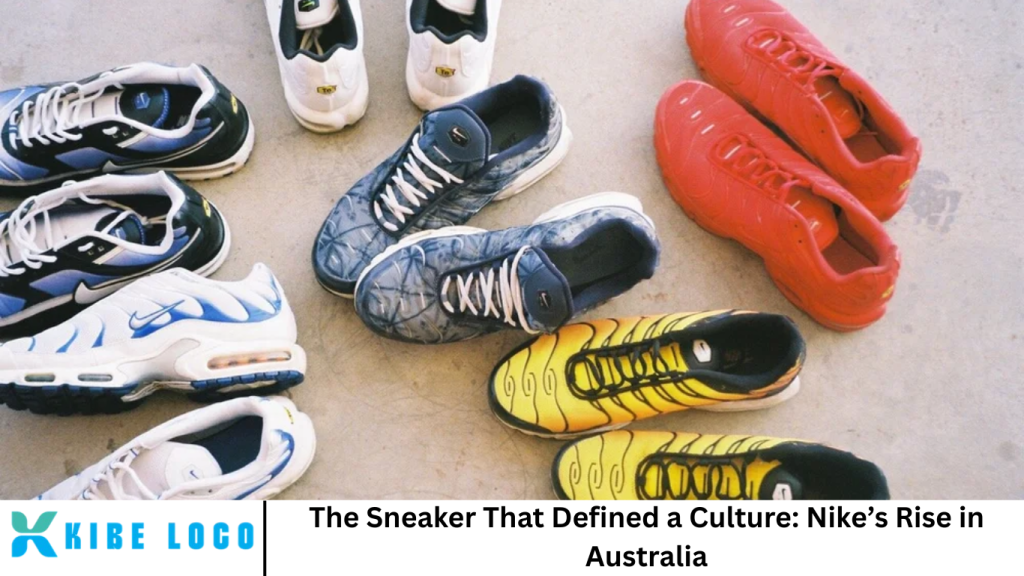From the basketball courts of America to the laneways of Melbourne and the hip-hop parties of Sydney, Nike has gone from a sportswear staple to a symbol of street credibility. In Australia, the evolution of sneaker culture wasn’t just about trends or global influence—it was about identity, rebellion, and expression.
One sneaker, in particular, rose above the rest, helping define an entire generation’s aesthetic. Nike didn’t just enter the Australian market—it stomped into the scene, reshaping streetwear and lifestyle in a way few other brands could.
This is the story of how Nike rose to become the centerpiece of Australian street culture—one step, one sneaker, one subculture at a time. In Australia, sneakers have become more than just shoes—they’re cultural markers, status symbols, and personal statements.
More Read: 10 Brazilian Slang Terms You’ll Never Find in a Textbook
A Global Brand Steps into Aussie Soil
Nike’s entrance into the Australian market wasn’t flashy. It began as any global expansion does—strategically and steadily. By the late 1980s and early 1990s, Nike was a growing name in sports performance gear, particularly for basketball. Its global dominance was being forged with the help of athlete endorsements, none bigger than Michael Jordan and his Air Jordan line.
Australia, meanwhile, had its own developing sneaker identity. Influences came from American sports broadcasts, MTV, and the growing popularity of skateboarding and basketball in Aussie suburbs. As Nike released bolder, more design-forward shoes, the Australian youth began to pay attention.
Initially viewed as a brand for athletes and runners, Nike soon became something more. The Air Max line, with its visible air bubbles and bold design, sparked early interest—not just among athletes, but among artists, dancers, and rebellious teens seeking a statement.
The Nike TN – More Than Just a Shoe
No sneaker has left a bigger imprint on the Australian streets than the Nike Tuned 1, affectionately known as the Nike TN. And with fashion came identity.
Released in 1998, the Nike TN—short for Tuned Air—was originally designed by Sean McDowell. Inspired by palm trees and sunsets, it was created for runners, but quickly took on a life of its own. In Australia, it became more than a performance shoe. It became a symbol.
By the early 2000s, the TN had exploded in popularity in Australia, especially among working-class youth and Pacific Islander communities. The shoe’s aggressive design, gradient colorways, and unmistakable “TN” badge on the heel made it instantly recognizable. Whether paired with tracksuits or jeans, the TN wasn’t just footwear—it was fashion.
Street Culture and Subcultural Identity
What set the Nike TN apart wasn’t just its looks—it was how it was worn and who wore it. In western Sydney, Melbourne’s outer suburbs, and parts of Brisbane, the TN became tied to specific youth subcultures.
For some, it was associated with toughness and street smarts. Others wore it as part of a broader streetwear look that included baggy pants, oversized tees, and flat-brim caps. The TN was often spotted in the schoolyards and shopping centers, worn by teens who didn’t just want to follow trends—they wanted to stand out and belong.
Of course, with popularity came controversy. Media often sensationalized the TN, labeling it a “gang shoe” or a symbol of delinquency. Police occasionally monitored youths wearing TNs, assuming criminal affiliation. But this unfair stereotyping only deepened the shoe’s street cred.
Nike’s Evolution in the Australian Market
Nike took notice of its product’s cult-like following in Australia. While not explicitly marketed for streetwear in the beginning, the brand slowly adapted. New TN colorways were released exclusively for the Australian market. Foot Locker Australia, a key Nike retailer, began to dedicate more shelf space to TNs, Air Max, and other models associated with youth culture.
Nike Australia shifted its approach. Collaborations, limited releases, and Australia-only drops created a sense of hype that mirrored sneaker culture overseas. By the 2010s, sneakers were no longer just practical—they were collectible.
Young Australians began queuing overnight for limited drops. Facebook groups and Instagram pages sprang up to trade rare pairs. The resale market boomed. Sneakerheads were born.
Cultural Acceptance and Mainstream Crossover
As street culture gained broader cultural acceptance, Nike sneakers followed. What once was rebellious or “bogan” became iconic. The TN that was once restricted to certain communities now appeared on runways, music videos, and high-fashion lookbooks.
Australian rap and drill scenes—especially artists from Western Sydney like ONEFOUR and HP Boyz—embraced the TN as a core part of their image. The shoe was no longer underground. It was front and center.
Meanwhile, Nike’s broader offerings, like the Air Force 1, Dunk Low, and Jordan 1, gained traction among fashion-forward Aussies. The rise of sneaker influencers, streetwear blogs, and global street style helped expand Nike’s appeal beyond its original audience.
More Than Fashion – A Cultural Statement
At its core, Nike’s success in Australia—especially with the TN—is not just a fashion story. It’s a story of identity. It’s about young people expressing who they are, where they’re from, and what they stand for.
For many, the Nike TN is a reminder of home, of high school friendships, of rebellion, and of growth. It’s as much a part of the Aussie streetwear scene as meat pies and Four’N Twenty. The TN reflects not just fashion, but a shared experience for thousands of Australians who grew up with them as more than just shoes.
Nike’s ability to listen, adapt, and respect the culture that adopted it is what made it thrive. Instead of trying to control the narrative, Nike leaned into it—celebrating the community that had made its sneaker a legend.
The Legacy and What’s Next
Today, Nike continues to dominate Australia’s sneaker landscape. From JD Sports to online boutiques and local sneaker expos, the brand is omnipresent. But the TN remains its most culturally significant model in Australia. Even 25 years after its release, it continues to sell out in stores, appear in music videos, and inspire new colorways and remixes.
The younger generation might be exploring Yeezys, New Balance, and other hype-driven sneakers, but the TN endures. It’s not driven by global fashion editors or curated hype—its power lies in authenticity. For Nike, the challenge moving forward is to continue innovating while honoring the grassroots communities that built their cultural empire.
Frequently Asked Question
Why is the Nike TN so popular in Australia?
The Nike TN gained popularity for its bold design and was quickly adopted by youth subcultures in Australian cities. It became a symbol of identity, toughness, and street style, especially in working-class and multicultural communities.
What does “TN” stand for in Nike TN?
“TN” stands for Tuned Air, a cushioning technology developed by Nike that was first introduced in the Nike Air Max Plus (commonly known as the TN). It provides responsive support for runners, but became a streetwear favorite.
Is the Nike TN considered controversial?
Yes, the Nike TN has occasionally been stigmatized by media and law enforcement due to its association with certain youth groups. However, for wearers, it represents pride, culture, and authenticity—not crime or controversy.
Are there Australian-exclusive Nike TN releases?
Yes. Nike has released several colorways of the TN exclusively for the Australian market, acknowledging its unique cultural relevance in the country.
What other Nike sneakers are popular in Australia?
Besides the TN, Australians also love the Air Force 1, Air Max 90, Air Max 95, Jordan 1, and more recently, the Dunk Low and Air Max Plus Drift. Nike dominates the Australian sneaker market overall.
How has Australian music influenced sneaker culture?
Australian hip-hop, drill, and rap scenes—especially artists from Western Sydney—have embraced Nike sneakers, particularly the TN. These artists have elevated the shoes from streetwear to national fashion icons.
Is Nike still the most popular sneaker brand in Australia?
As of 2025, Nike remains a leading sneaker brand in Australia, especially among youth. While competition exists from brands like Adidas, New Balance, and Puma, Nike continues to dominate in cultural relevance and streetwear appeal.
Conclusion
Nike’s rise in Australia is not just a business success—it’s a cultural phenomenon. What started as a sports brand became a symbol of identity, rebellion, and pride for thousands of Australians. The Nike TN, in particular, did more than look good. It gave voice to a generation, a street, a suburb. It stomped across concrete with defiance and style. Today, it’s not just a sneaker—it’s a legacy. Nike’s rise in Australia is more than a story of branding or fashion—it’s a story of cultural adoption, local identity, and the unexpected power of self-expression.


